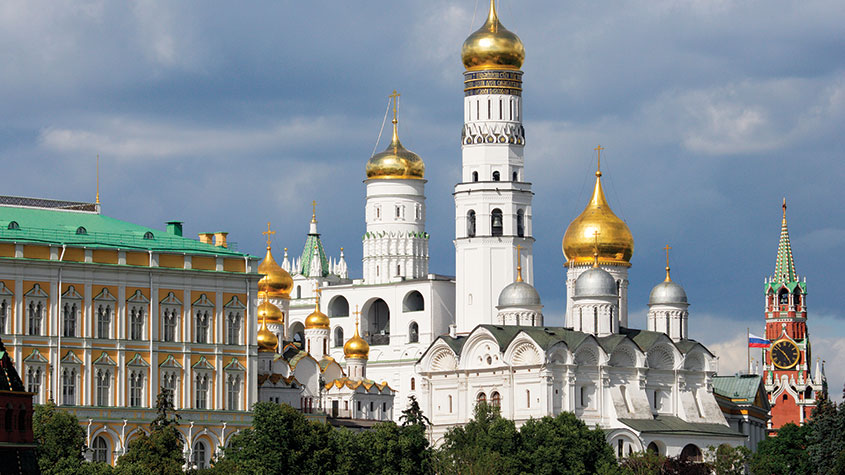Soaring milk prices – who will benefit?
The milk price has risen so high that even the EU has scrapped its export subsidies. Simon Wilson looks at why consumers will be paying more for cheese this summer - and who's actually making money from milk these days.
What has the EU done?
At a meeting last week, the EU Commission's dairy management committee decided to cut the export subsidies it pays on milk products such as butter and skimmed milk powder to zero. It's the first time this has happened in the 40-year history of the so-called Common Agricultural Policy a protectionist scheme that uses taxpayers' money to support Europe's farmers. Ever since the mid-1960s, the EU has fixed support prices for dairy products at well above the going rate on the world market, inevitably leading to over-production. That protection resulted in the so-called butter mountain, as well as milk quotas and, more recently, the dairy-cow premium (which is now part of the Single Payment subsidy to farmers).
What's changed?
Although the gap between the price of dairy products in the EU and the world price has narrowed over the years, prices have always been a little higher in the EU until now. Since February this year, the world price for skimmed milk has rocketed by almost 60%, while butter is up by 28% and cheese 16%. After three years of steadily falling milk prices (by 3% last year) and a bigger-than-ever squeeze on margins for hard-pressed dairy farmers, the wholesale price of milk has doubled over the past 12 months. That's obviously good news for taxpayers, who will no longer have to pay out to make Europe's exports competitive. But it's bad news for food manufacturers.
Why are price rises bad news for manufacturers?
Because skimmed milk powder is a vital ingredient for a wide range of food businesses, which have seen the cost leap from $2,000 per tonne to $4,800 in the past six months. Recent weeks have seen a series of stock analyst downgradings of big food conglomerates (including Nestl, Unilever, Danone and Numico) on the basis that they will struggle to pass on higher costs to consumers. Butter, too, is far more expensive up from $1,800 to $2,550 a tonne. Meanwhile, UK shoppers so far protected from significant rises in the retail cost of milk have seen the price of cream tick up 23% in a year, and can expect a big jump in the price of cheese this summer, on top of a 30% hike in the past year.
MoneyWeek
Subscribe to MoneyWeek today and get your first six magazine issues absolutely FREE

Sign up to Money Morning
Don't miss the latest investment and personal finances news, market analysis, plus money-saving tips with our free twice-daily newsletter
Don't miss the latest investment and personal finances news, market analysis, plus money-saving tips with our free twice-daily newsletter
Why are prices shooting up?
Restricted supply and surging world demand has inevitably meant rocketing prices. The continuing drought in Australia made worse, not better, by this month's flash floods has crippled the country's dairy industry, pushing up the wholesale price of skimmed milk by 60% in six months. At the same time, demand for dairy products in Asian markets has soared, as increasingly affluent consumers, especially in industrialising China and the oil-rich Middle East, get a taste for Western-style diets richer in protein and dairy produce. This change is a long-term trend: growing populations where incomes are rising tend to consume more animal proteins, and China's cheese imports have been growing steadily for five years. But over the past six months, that trend has been accelerating.
Are prices likely to fall anytime soon?
It's unlikely. The head of the European Dairy Association, Joop Kleibeuker, reckons the market could even face milk shortages in the near future. He told DairyReporter.com: "in my experience, the problem we are facing is quite unique". The US Department of Agriculture expects Australia's dairy production to fall by 4% this year, while production in
New Zealand, another major producer is rising at its lowest rate since 2000, partly due to rising land prices preventing the expansion of dairy farms. Meanwhile, it may be difficult to increase production in the US because the boom in biofuels is driving up the price of corn, and thus of feedstocks for cattle. "There has been increased supply by markets like China and Ukraine," added Kleibeuker, "but this remains insignificant."
What kind of impact will this have on dairy farmers?
Rising prices are certainly not bad news for farmers but many in the industry reckon it's a bit early to celebrate. Of the 13.5 billion litres of milk a year produced by British cows, seven billion are sold as fresh milk. The rest is turned into exportable products, such as milk powder, cheese and butter. Farm-gate prices for milk have gone up in recent months, but only by about 7%, or 1.3p per litre. Long-term price deals with supermarkets mean farmers are not set for a big windfall, so tough times for the industry are likely to continue. The Milk Marketing Board (according to taste, either a farmers' co-operative protecting rural interests or a price-fixing monopoly letting inefficient producers stay in business) was scrapped by the Tories in 1994. This fragmentation hammered dairy farmers' pricing power a situation worsened by large-scale consolidation among milk processors and supermarkets. Today, just three large processors (Arla, Robert Wiseman and Dairy Crest) supply fresh milk to the big supermarkets, which in turn account for almost two-thirds of overall retail sales.
Who's making money from milk?
In 1995, farmers got 24.5p per litre of milk, which supermarkets sold at 42p a litre, at a profit of 1.3p. The rest went to the milk processor. Ten years on, the price was 51p, but the supermarket's share had ballooned to 15.6p. The processor's cut had stood still, and the farmer's share had fallen to 19p per litre below the cost of production. This is still the average price paid to UK farmers, but rising fuel and feed costs mean even the most efficient struggle to profit. The average production cost is 21p a loss of 3p a litre so it's unsurprising that half of Britain's 35,000 diary farmers have quit in the last ten years.
Get the latest financial news, insights and expert analysis from our award-winning MoneyWeek team, to help you understand what really matters when it comes to your finances.
Simon Wilson’s first career was in book publishing, as an economics editor at Routledge, and as a publisher of non-fiction at Random House, specialising in popular business and management books. While there, he published Customers.com, a bestselling classic of the early days of e-commerce, and The Money or Your Life: Reuniting Work and Joy, an inspirational book that helped inspire its publisher towards a post-corporate, portfolio life.
Since 2001, he has been a writer for MoneyWeek, a financial copywriter, and a long-time contributing editor at The Week. Simon also works as an actor and corporate trainer; current and past clients include investment banks, the Bank of England, the UK government, several Magic Circle law firms and all of the Big Four accountancy firms. He has a degree in languages (German and Spanish) and social and political sciences from the University of Cambridge.
-
 How cancelling unused direct debits could boost your pension by £37,000
How cancelling unused direct debits could boost your pension by £37,000A new year refresh of your spending could save you money and help boost your pension pot.
-
 NS&I cuts interest rates on 8 savings accounts
NS&I cuts interest rates on 8 savings accountsNS&I will now offer less attractive interest rates for customers wishing to lock their savings away to grow for one, two, three or five years.
-
 No peace dividend in Trump's Ukraine plan
No peace dividend in Trump's Ukraine planOpinion An end to fighting in Ukraine will hurt defence shares in the short term, but the boom is likely to continue given US isolationism, says Matthew Lynn
-
 Europe’s new single stock market is no panacea
Europe’s new single stock market is no panaceaOpinion It is hard to see how a single European stock exchange will fix anything. Friedrich Merz is trying his hand at a failed strategy, says Matthew Lynn
-
 Metals in meltdown: investors should buy now
Metals in meltdown: investors should buy nowAluminium, zinc and nickel have struggled over the past few months, says David J. Stevenson. But the best time to scoop up shares in the companies that mine them is when they are out of favour.
-
 Gold or bitcoin: what will replace the US dollar?
Gold or bitcoin: what will replace the US dollar?Analysis As Russia and the West move further apart, there’s a growing need for a new global reserve currency. The US dollar could soon be replaced by gold or bitcoin, argues Dominic Frisby.
-
 The fallout from Europe’s energy crisis
The fallout from Europe’s energy crisisNews The soaring price of gas could see the EU impose a cap on the price of electricity generated by nuclear and renewables, while signs of strain appear in the energy derivatives market, and investors are dumping European stocks.
-
 The best way to invest in natural gas
The best way to invest in natural gasTips David Stevenson looks at the best way to invest in natural gas as the demand for the commodity surges.
-
 European stocks are ignored and cheap – but possibly not for long
European stocks are ignored and cheap – but possibly not for longNews European stocks are out of favour, with some analysts predicting their worst year since 2008. But the worst of the sell-off could be over, and European value shares in particular look appealing.
-
 Price of gas soars as Moscow turns off the taps
Price of gas soars as Moscow turns off the tapsNews As Russia cuts its gas exports to the EU, the price of natural gas continues to rise. Restricted supplies could see energy rationing and recession in Germany, Europe’s biggest economy.